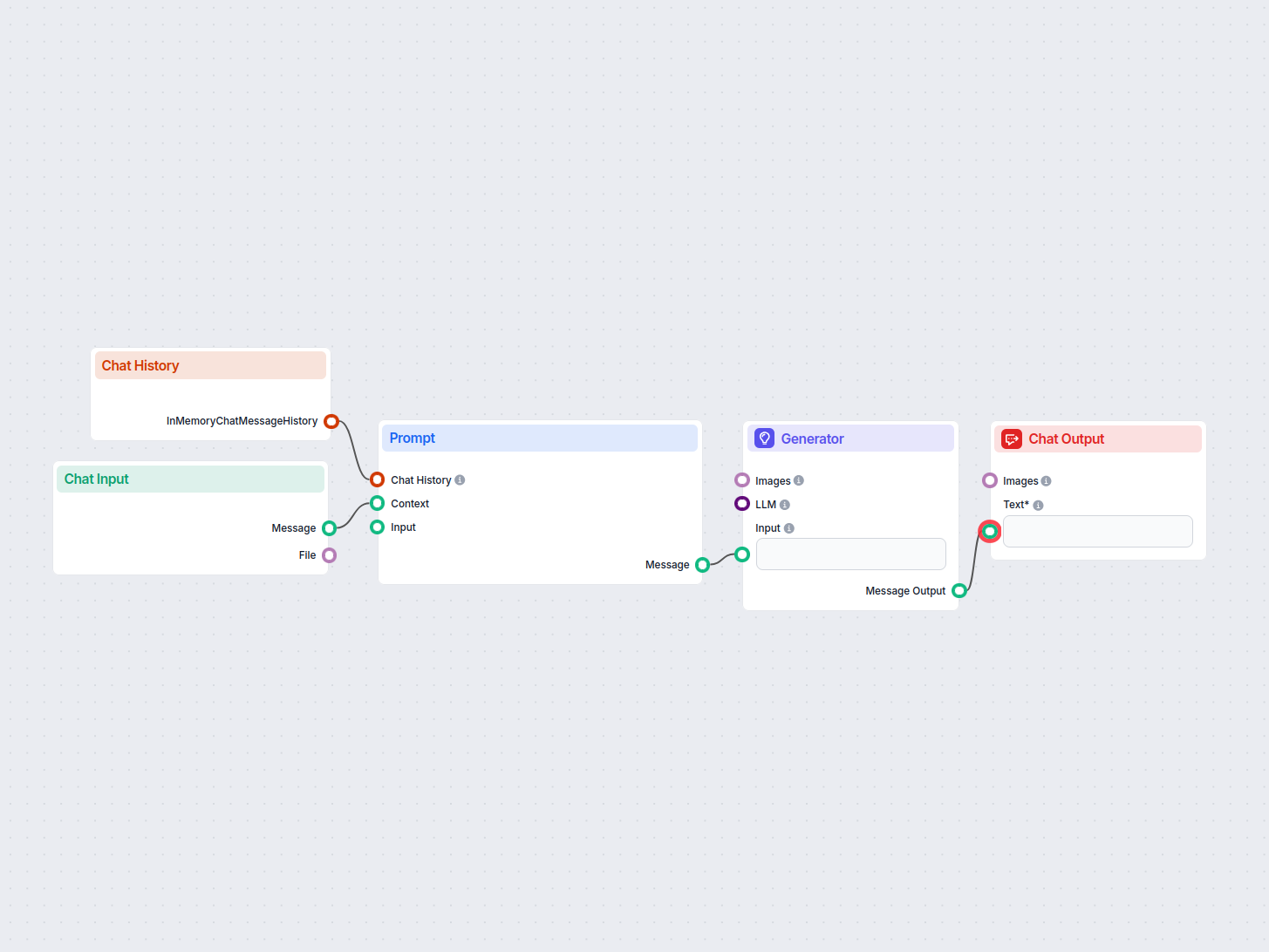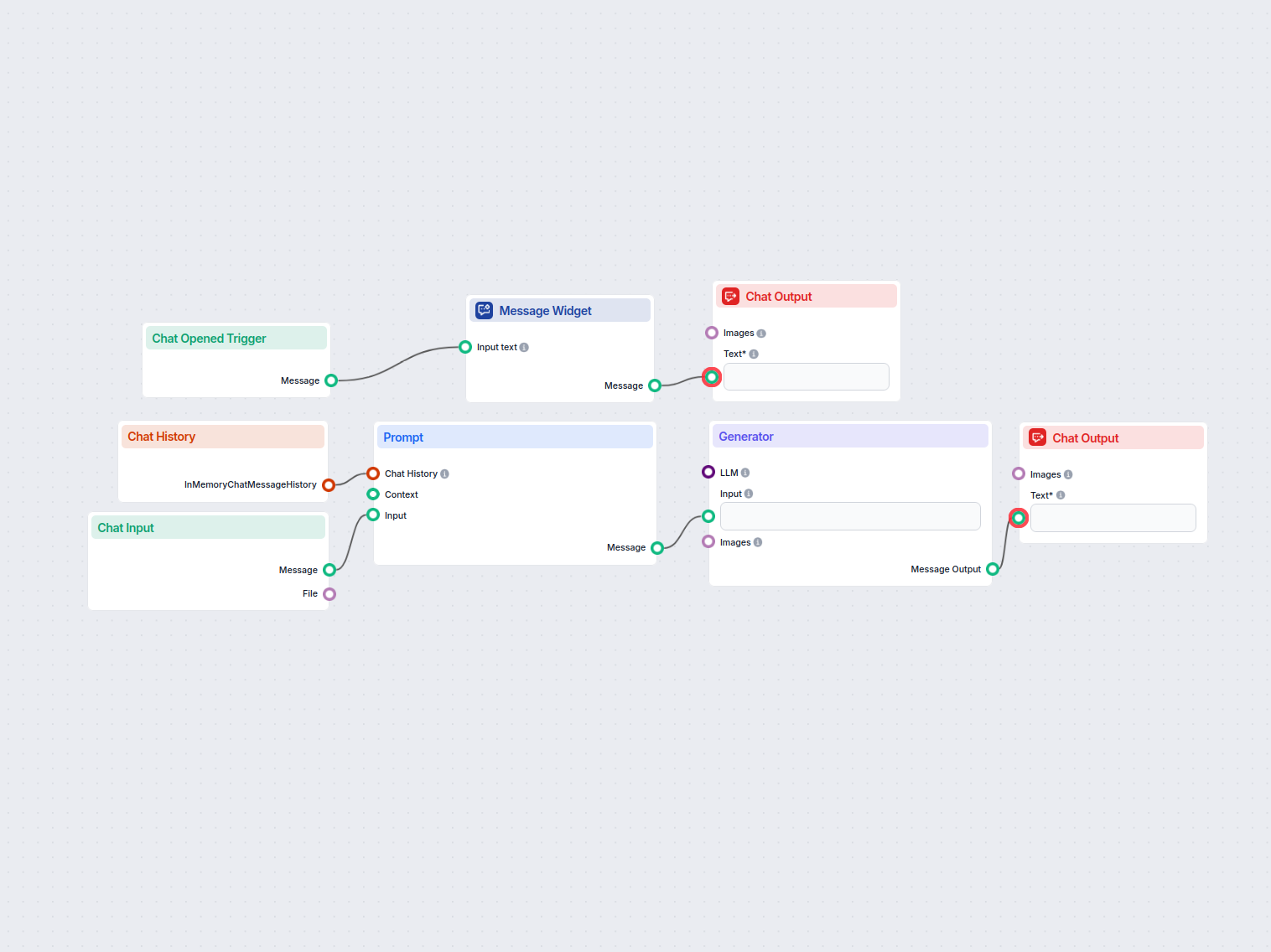Prompt
Creates the main prompt for the LLM to generate a mission statement, with explicit instructions and negative examples.
Automatically crafts a tailored mission statement based on user input and chat context. Ideal for startups, entrepreneurs, and marketers seeking to articulate their core purpose quickly and professionally.

Flows
Creates the main prompt for the LLM to generate a mission statement, with explicit instructions and negative examples.
Below is a complete list of all components used in this flow to achieve its functionality. Components are the building blocks of every AI Flow. They allow you to create complex interactions and automate tasks by connecting various functionalities. Each component serves a specific purpose, such as handling user input, processing data, or integrating with external services.
The Chat Input component in FlowHunt initiates user interactions by capturing messages from the Playground. It serves as the starting point for flows, enabling the workflow to process both text and file-based inputs.
The Button Widget component in FlowHunt transforms text or input into interactive, clickable buttons within your workflow. Perfect for creating dynamic user interfaces, collecting user choices, and improving engagement in AI-driven chatbots or automated processes.
Discover the Chat Output component in FlowHunt—finalize chatbot responses with flexible, multi-part outputs. Essential for seamless flow completion and creating advanced, interactive AI chatbots.
Learn how FlowHunt's Prompt component lets you define your AI bot’s role and behavior, ensuring relevant, personalized responses. Customize prompts and templates for effective, context-aware chatbot flows.
Explore the Generator component in FlowHunt—powerful AI-driven text generation using your chosen LLM model. Effortlessly create dynamic chatbot responses by combining prompts, optional system instructions, and even images as input, making it a core tool for building intelligent, conversational workflows.
The Chat History component in FlowHunt enables chatbots to remember previous messages, ensuring coherent conversations and improved customer experience while optimizing memory and token usage.
The Chat Opened Trigger component detects when a chat session starts, enabling workflows to respond instantly as soon as a user opens the chat. It initiates flows with the initial chat message, making it essential for building responsive, interactive chatbots.
Flow description
This workflow is designed to help users quickly generate focused and high-quality mission statements for organizations, startups, or projects. It provides an interactive chat interface, leverages a customizable prompt, uses recent chat history for improved context, and employs a language model to automate the generation of mission statements.
When a user opens the chat, they are greeted by a welcoming message and prompted to share their ideas or organizational description. Two example buttons are displayed: one with a welcome message and another with a sample input (“Tech startup focused on innovative AI solutions.”), making it easy for users to get started or see how the tool works.
| Step | Component | Functionality |
|---|---|---|
| 1 | Chat Opened Trigger | Detects when chat is opened, triggering the flow. |
| 2 | Button Widgets | Shows a welcome/instruction message and a sample input as clickable buttons. |
| 3 | Chat Output | Displays the selected button’s message in the chat. |
| 4 | Chat Input | Accepts user input about their company, project, or mission. |
| 5 | Chat History | Collects previous chat messages to maintain context. |
| 6 | Prompt Template | Builds a dynamic prompt for the language model, using the user input and chat history. The prompt is carefully crafted to avoid generic phrases and focus on concise, valuable content. |
| 7 | Generator | Uses an LLM (Large Language Model) to generate a mission statement based on the prompt. |
| 8 | Chat Output | Displays the generated mission statement to the user. |
In summary, this workflow provides a user-friendly, scalable, and efficient solution for generating mission statements, leveraging automation and AI to ensure high-quality, context-aware output with minimal manual effort.
We help companies like yours to develop smart chatbots, MCP Servers, AI tools or other types of AI automation to replace human in repetitive tasks in your organization.
Easily generate comprehensive business plans using AI. This workflow collects user input, utilizes chat history for context, and leverages a prompt template and...
Generate unique content ideas and summaries using AI by researching top Google results for any keyword. Ideal for content marketers and creators to quickly disc...
A simple AI chat assistant workflow that leverages previous conversation history to generate relevant responses to user input. Includes a welcome message and us...
Cookie Consent
We use cookies to enhance your browsing experience and analyze our traffic. See our privacy policy.



